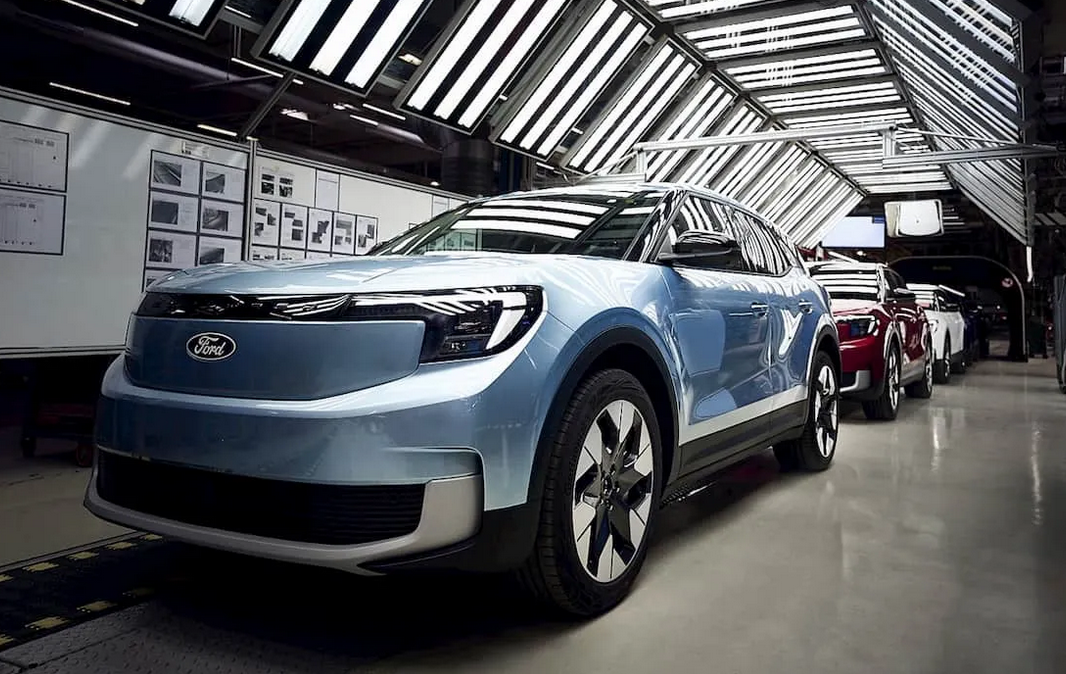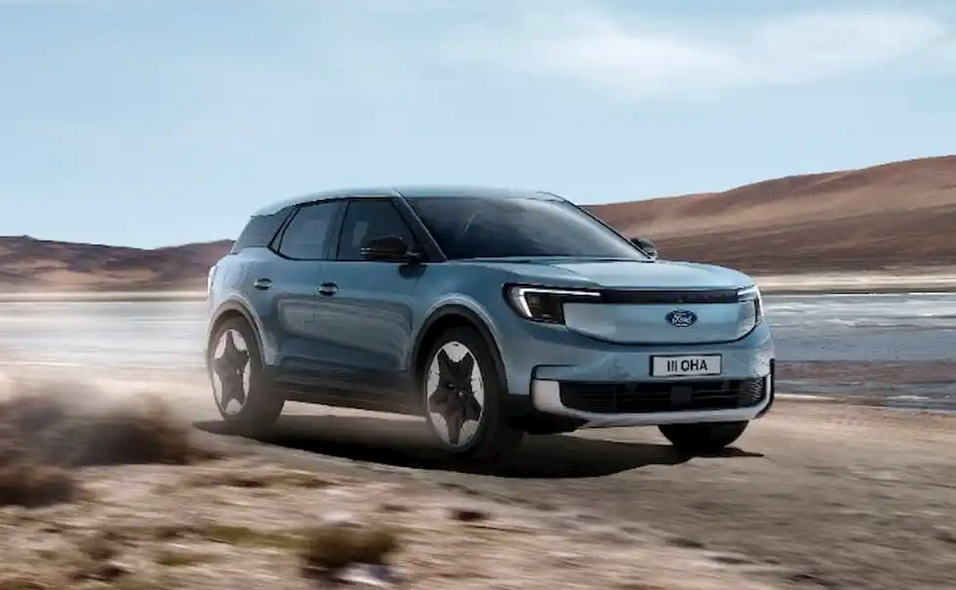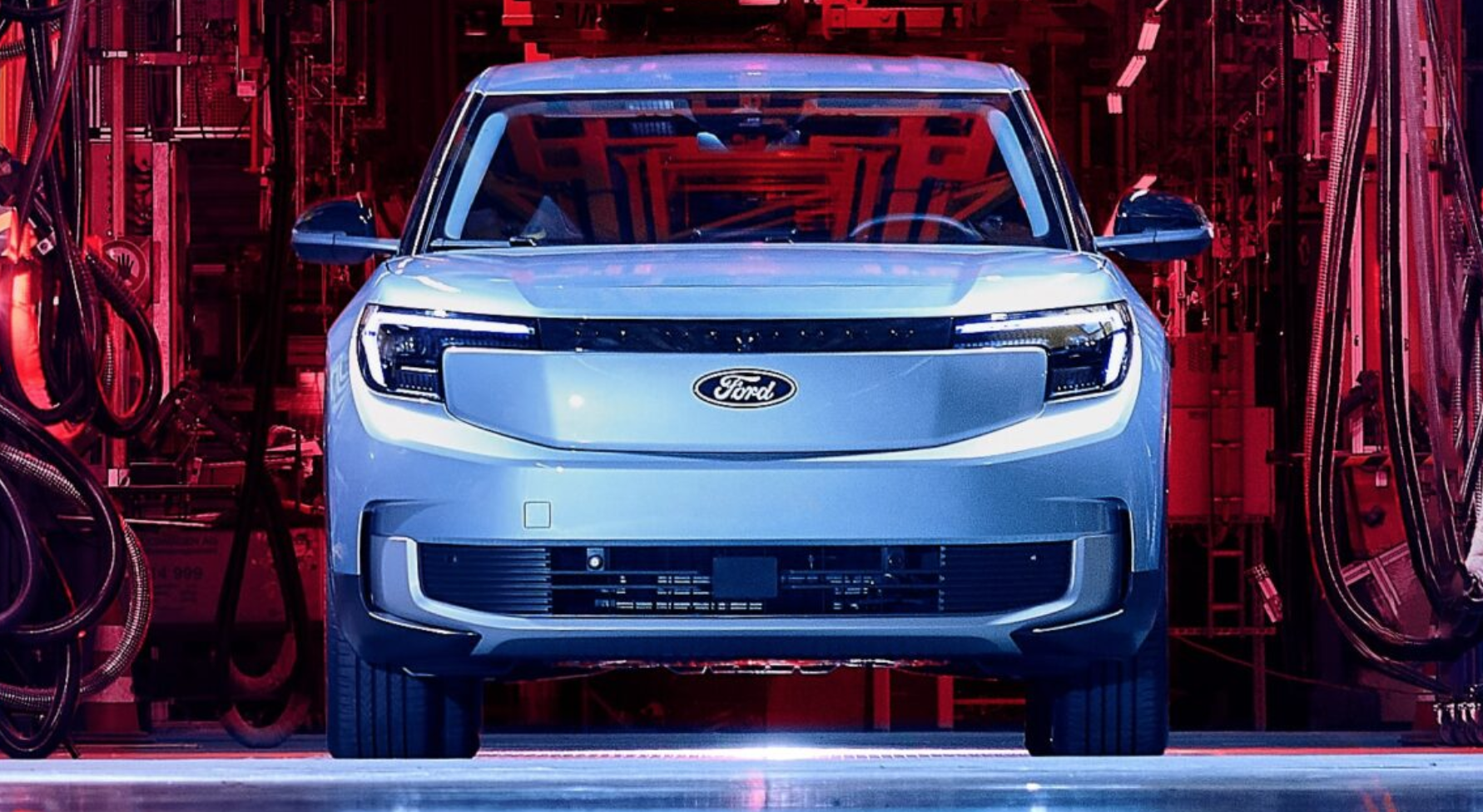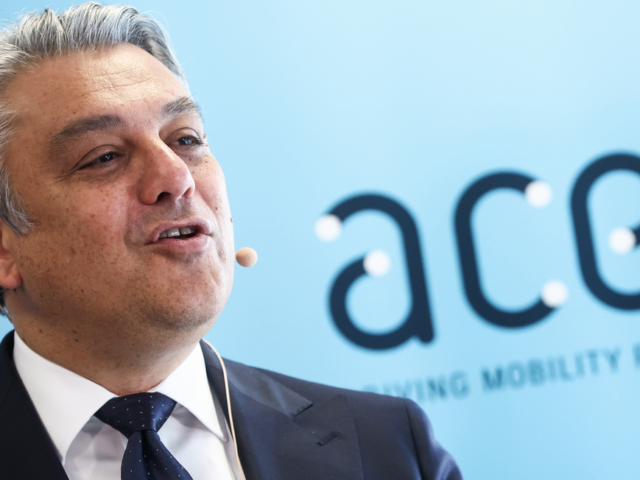The first production model of the new Ford Explorer has rolled off the production line in Cologne and was also handed over directly to the first customer at the Cologne Electric Vehicle Centre. The second electric model from Cologne is due to follow this year. Also noticeable: Ford’s EV sales grew by 65% in May 2024.
As Ford’s first all-electric Explorer rolls off the production line at its new Cologne EV facility, the company is already looking toward its second EV. Ford will reveal its new sports EV crossover soon ahead of production later this year. Ford unveiled its electric Explorer last March, converting the iconic SUV into an EV built for the modern era.
Start of a new era
The Explorer EV is a five-seat family SUV aimed at the European market. Ford combined classic American design with German engineering to create this fully electric mid-size SUV. Ford’s all-electric Explorer is based on Volkswagen’s MEB platform. It’s the first of a partnership initiated in 2020 to revamp the Ford brand in the region.
Although production was expected to begin before the end of 2023, Ford delayed it last summer to meet new global safety rules. After re-engineering the new EV with an updated NMC battery, Ford’s electric Explorer is now ready to roll out.
The Explorer EV is “a better vehicle now than we would have launched half a year ago,” said Martin Sander, head of Ford’s Europe EV unit. “The extra time was used to get everything nailed down,” Sander explained, “to ensure that we’re delivering a perfect vehicle to our customers.”
The Explorer can drive 602 km on a single charge with the new battery. Kieran Cahill, VP of manufacturing for Ford Europe, said, “The start of production marks the beginning of a new era for Ford in Europe.”
Ford’s electric Explorer is currently available as an ‘Extended Range’ in a single-motor RWD and a dual-motor AWD version. The single-motor model has a 77 kWh battery and a 210 kW/286 hp motor in the back.
Ford’s dual-motor Explorer packs VW’s 246 kW/335 hp powertrain (used in its sporty GTX models) and a 79 kWh battery for a 566 km range. Thus, both are equipped with an extended-range NMC battery.
Totally remodeled plant
Detroit has invested more than two billion US dollars in the German site to make the Cologne plant fit for the future, specifically for the production of electric cars. The entire site has been and is being remodeled for the Explorer and the second model, which will celebrate its premiere later this year.
Transmissions are no longer manufactured in Cologne, and the old engine production facility has been demolished. Where three-cylinder engines (for the Fiesta) used to be produced, work is still underway on the company’s own battery assembly line.
Ford intends to assemble the battery packs for the Explorer e-SUV and the second model, a sportier electric crossover, in the late summer. Until then, technology partner VW will deliver the finished battery packs from Skoda’s battery assembly plant in Mlada Boleslav.
There is now only one large production line in the hall instead of two parallel ones, and the team in the final assembly has been increased from 780 to over 1,000 people. Around 3,300 people work in the various production areas for the two electric cars in Cologne.
In addition, a new quality assurance system was set up at the end of the ‘battery line’. Cameras and lasers check each individual platform here before it is screwed under the body during the so-called ‘marriage’. Artificial intelligence analyses this data and assesses whether everything has been pre-assembled correctly.

In the hot seat
Ford says a standard-range, smaller NMC battery will be available later. Prices are expected to start at around €42,000 then. For now, the RWD Extended Range starts in Belgium at €48,950, while the AWD has to cost at least €60,950.
The Explorer has been available to order since the end of March, although the model with the small battery will not be launched on the market until the end of the year.
“In this segment, the majority of customers opt for the larger battery,” explains Ford’s Managing Director of Marketing and Sales, Christian Weingärtner. “With electric cars, we see that leasing is more important than cash purchases. And the larger battery doesn’t make such a big difference to the leasing installment.”
Although Weingärtner does not want to say exactly how many pre-orders there are for the new Explorer, he is basically “quite satisfied”. “We have modeled ourselves on the market launch of the Puma because, with the Puma, we have also launched a new model series where Ford previously had no offers.”
“And we are currently exceeding the Puma’s figures with the Explorer,” Weingärtner adds. However, the manager also emphasizes the importance of timing because the big push for the Explorer is not expected to come until the vehicle is in the showroom at dealerships.
Ford awaits the first sales results rather anxiously. Whether the Explorer and the upcoming crossover model hit the market or not will make a big difference for Ford. Ford no longer has a combustion engine model with which the plant could be utilized in the event of fluctuating demand for electric vehicles.
Rising EV sales in the U.S.
Meanwhile, despite a recent pullback on its electric vehicle strategy amid “slower-than-expected” demand, Ford’s EV sales continued surging in May in the U.S. All Ford electric models, including the F-150 Lightning and Mustang Mach-E, saw double-digit sales growth last month.
Ford’s EV sales in the U.S. climbed 64.7% in May, with 8,966 models sold. The Mustang Mach-E was the top-selling EV, with 4,255 units, up 46% from May 2023. Ford F-150 Lightning sales were up 91% year-over-year, with 3,260 models sold.
Meanwhile, Ford’s electric commercial van, the E-Transit, continues to see higher demand. Another 1,450 electric vans were sold in the States, up 77% from last year. Ford sold over 37,200 electric vehicles through the first five months of the year, nearly double (+87.8%) the 19,809 EVs sold at this time last year. The EV sales growth in May was enough to outpace Ford’s hybrid (+64.5%) and ICE sales (+5.6%).
Despite the strong performance, Ford is delaying around $12 billion in EV investments. It’s also planning to invest more in hybrid tech, following in Toyota’s footsteps and those of a growing number of competitors.





Comments
Ready to join the conversation?
You must be an active subscriber to leave a comment.
Subscribe Today